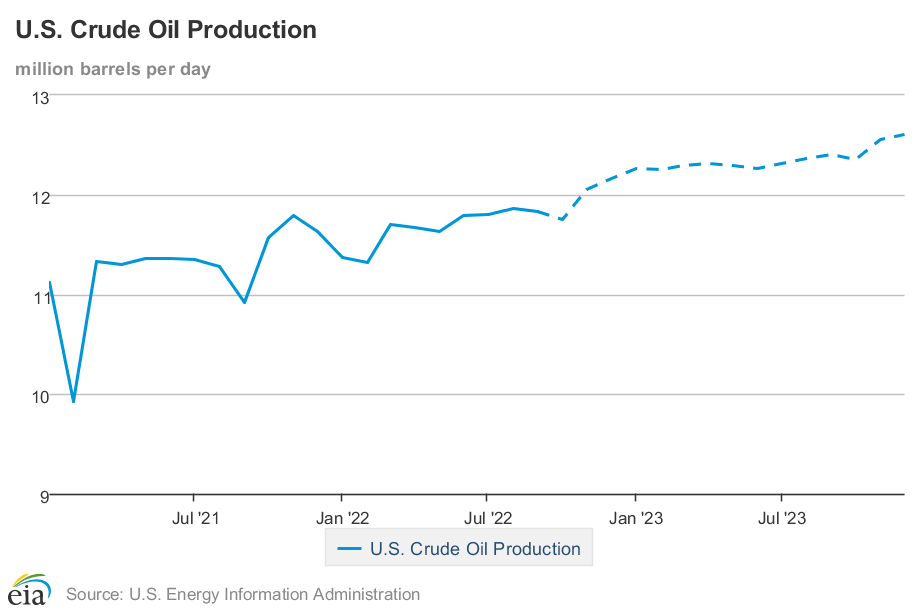Actual Data Destroys GOP Narrative On Energy Production
tags
The United States is producing more energy than ever before, but you wouldn’t know that if you listened to conservative media or political candidates. Republican politicians love to point to the record energy production in 2019 to criticize President Biden, and try to claim that Biden has waged some kind of “war on energy.”
The truth is, according to projections from the Energy Information Administration’s Annual Energy Outlook, 2022 is expected to break the previous record for the most energy produced in the United States across all sources.
| Actual Production, 2019-2021 | Projected Production | |
|---|---|---|
| 2019 2020 2021 | 2022 2023 | |
| Renewable | 11.63 11.69 12.32 | 12.79 13.37 |
| Nuclear | 8.45 8.25 8.13 | 8.18 8.2 |
| NGPL | 6.35 6.8 7.06 | 7.57 7.91 |
| Crude | 25.56 23.5 23.24 | 24.72 25.5 |
| Natural Gas | 35.19 34.72 34.42 | 37.01 37.39 |
| Coal | 14.26 10.7 11.62 | 12.7 13.06 |
| Total | 101.44 95.66 96.79 | 102.97 105.43 |
The markets have been climbing back from early-pandemic production cuts. In fact, in 2020, only renewable energy and natural gas petroleum liquids saw overall growth. Early in the pandemic, we saw crude oil prices collapse briefly to the point where futures prices dipped into the negative. That sent major oil companies running to the Trump administration to take advantage of between $3 billion and $7 billion in bailouts, only to come back into record-shattering profits as the economy recovered under President Biden.
Many conservative politicians might be shocked to learn that crude oil production has been trending upward since President Biden took office in January of 2021. The most recent monthly Short-Term Energy Outlook from the Energy Information Administration projected that crude oil production would hit a new annual production record in 2023.

Meanwhile, dry natural gas production broke the previous annual record in 2021 and recently hit a new monthly high production rate in September of 2022 as reported in the most recent Short Term Energy Outlook.
One area that has continued to grow, despite the pandemic, and is poised for massive new growth of course is in the renewable energy sector. Renewable energy production is projected to end the year up 1.16 quadrillion BTUs from 2019 levels, and that was calculated before Congress passed the Inflation Reduction Act, which will massively accelerate growth in renewable energy. According to an analysis by Rystad Energy, the Inflation Reduction Act will boost wind & solar capacity by 40% by 2030, attracting $270 billion in investments.
The Inflation Reduction Act will also incentivize energy-saving technologies that will bring down overall energy consumption at the macro level, and more importantly, help families save money at the household level.